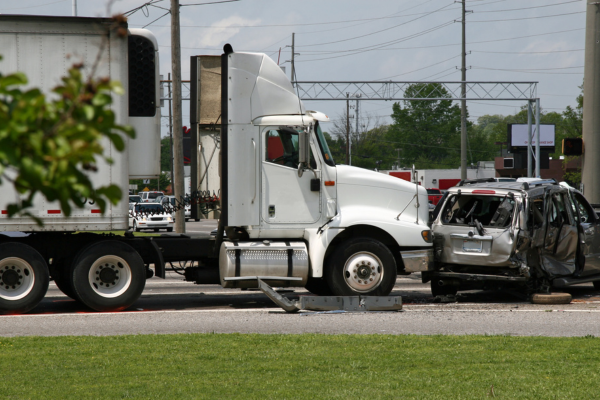
Rear-end collisions with commercial trucks pose significant dangers, often resulting in severe injuries or fatalities. Trucks are larger, heavier, and more challenging to maneuver than standard vehicles, so understanding the unique risks and best practices to avoid rear-end collisions is essential for all drivers. Here’s a breakdown of strategies to enhance road safety and avoid rear-end collisions with commercial trucks.
Understand the Physics of Trucks
Commercial trucks are much larger and heavier than regular vehicles, dramatically increasing the force of impact in a collision. Loaded trucks can weigh up to 80,000 pounds, and their stopping distance is significantly greater than that of passenger vehicles, especially at high speeds or in adverse weather. Recognizing the limitations of trucks can help drivers adjust their behavior accordingly, such as providing more space when following and braking sooner when stopping ahead of a truck.
Maintain a Safe Following Distance
One of the most critical factors in avoiding rear-end collisions is keeping a safe distance from trucks. A general rule is the “four-second rule,” where drivers maintain at least a four-second gap between their vehicle and the truck ahead. This distance should increase under adverse conditions such as rain, snow, fog, or at night, where visibility and road traction are reduced. Maintaining this gap allows drivers ample time to react to sudden stops or lane changes from the truck, reducing the risk of rear-end collisions.
Avoid Blind Spots
Trucks have large blind spots, commonly called “no-zones,” on all four sides: directly in front, directly behind, and along each side (especially on the right). Staying within a truck’s blind spots makes it difficult for the truck driver to see other vehicles, increasing the risk of a collision if the truck changes lanes or stops suddenly. As a rule of thumb, if you can’t see the truck driver in their side mirrors, they likely can’t see you. When passing a truck, do so promptly and avoid lingering in blind spots to reduce your risk.
Be Mindful of Brake Lights and Turn Signals
Truck drivers often need to brake early due to their vehicle’s weight and stopping distance. Watching for early signals from truck brake lights can help drivers anticipate stops and avoid rear-end collisions. Additionally, respecting truck turn signals is crucial, as trucks often require more space to maneuver. Avoid cutting in front of a truck, especially when it signals a turn, as this can lead to dangerous situations where the truck may be unable to stop or maneuver to avoid hitting your vehicle.
Avoid Distracted Driving
Distracted driving is a leading cause of rear-end collisions. Activities like texting, adjusting the radio, or eating distract drivers from the road and reduce reaction times. Staying vigilant is even more critical when driving near trucks because trucks take longer to stop, accelerate, and change lanes. Avoid any activities that divert your attention from the road and focus entirely on driving when you’re near large vehicles to maintain maximum awareness.
Practice Defensive Driving Techniques
Defensive driving involves anticipating potential hazards and preparing to avoid them. For instance, if a truck is approaching a red light or an intersection, it’s best to assume they may take longer to stop and require more space than you would in a smaller vehicle. Additionally, staying aware of potential road hazards, like construction zones, that might require a truck to stop or change lanes abruptly can help you respond appropriately.
Avoid Sudden Lane Changes
Abrupt lane changes can increase the likelihood of a rear-end collision, especially near trucks. Always signal before changing lanes and avoid cutting in front of a truck. If a truck is changing lanes, let it complete the maneuver before attempting to pass. Patience and clear communication through signals can help ensure all drivers on the road have enough time to react safely.
Use Proper Lighting and Visibility Techniques
Ensuring your lights are in good working order and using them in low-visibility situations can help truck drivers spot your vehicle. Additionally, using hazard lights when slowing down or stopping on the shoulder can alert truck drivers approaching from behind and prevent a potential rear-end collision.
Contact a Florida Personal Injury Lawyer
If you have been involved in a personal injury incident, seeking legal advice is essential to protect your rights. Our legal team has more than 40 years of experience seeking justice for accident victims. Our attorneys have sought and won millions of dollars for our injured clients.
Call 850-601-1111 to schedule a complimentary consultation with no obligations. This consultation will help you explore your legal options. Let us help you fight for fair compensation.


